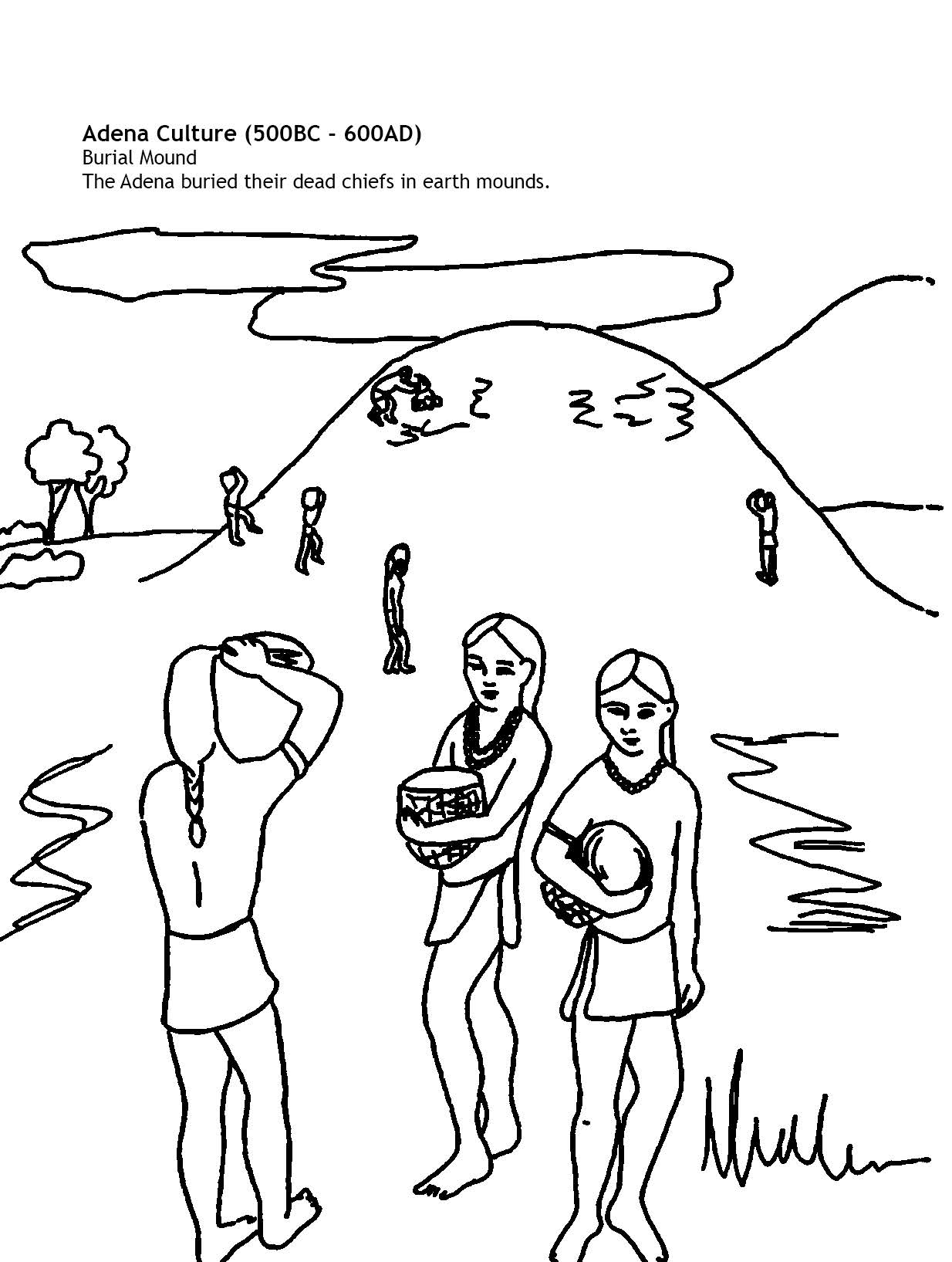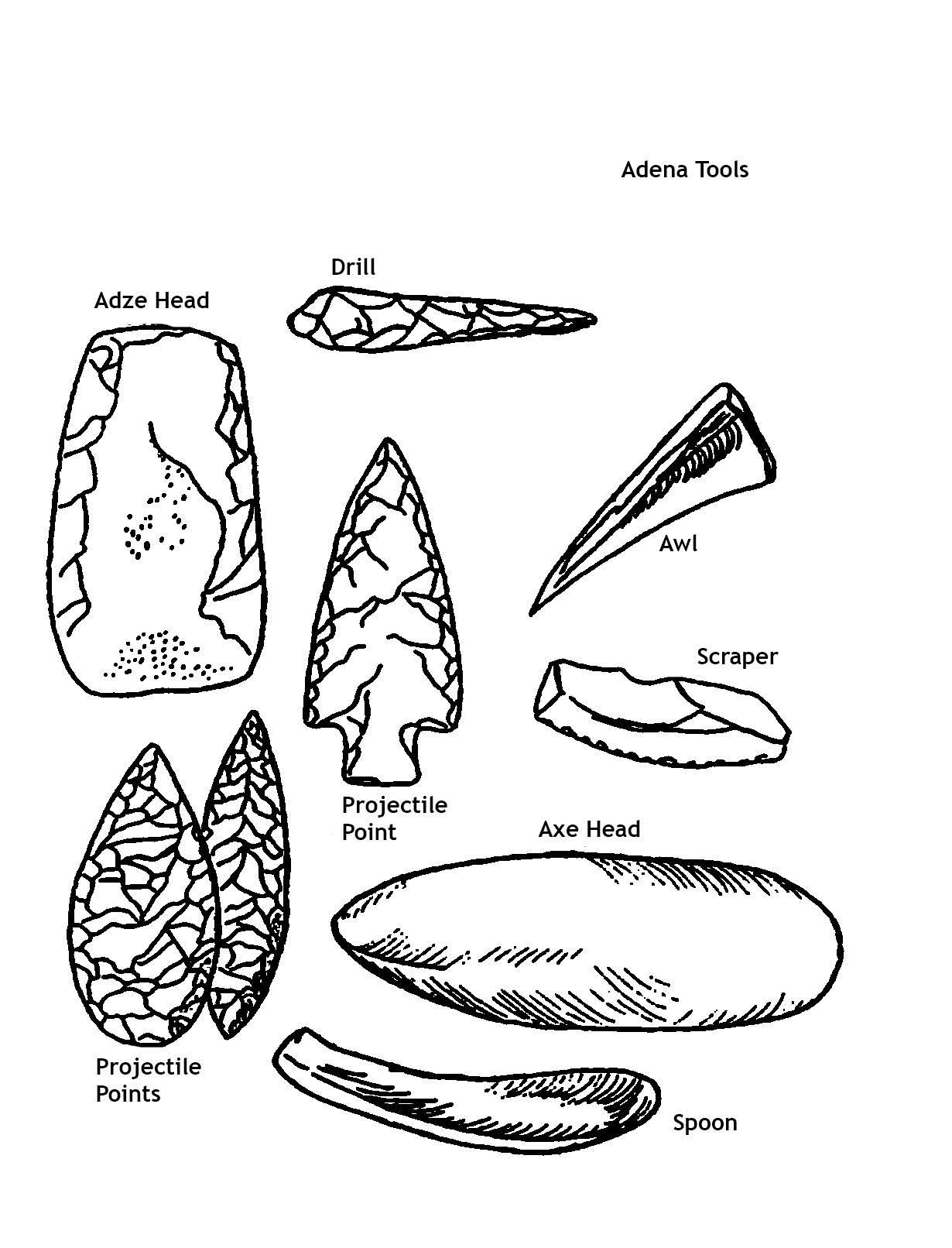The Adena Culture
The Adena culture, named after a site near Chillicothe, Ohio, lived during the Woodland period between 500 B.C. and 200 A.D., roughly 2500-1800 years ago. The Adena are an archaeological culture, meaning that they did not call themselves “Adena” and likely would not have identified themselves as one group. Rather, archaeologists have grouped Adena sites together based on shared traits, such as mortuary practices and what types of tools they used.

The Adena are primarily known for their burial mounds, though many of these mounds have now eroded through natural causes as well as continual plowing by farmers. The Adena were mobile hunter-gatherers and moved camp seasonally to take advantage of seasonal plants and hunting. They likely lived in small family groups and interacted with other small groups while moving around the land. Important hunting resources included white-tailed deer, black bear, and elk, while items such as fruits and nuts would be gathered. Adena hunters were likely mainly men, who used atlatl’s (aht-laht), a tool used to lengthen spear throws, to help them throw farther and more accurately. Adena women are thought to have been in charge of gardening, growing plants such as sunflower, maygrass, and goosefoot, which would have been an important part of their diet.


Known for their far-reaching trade, items such as copper from the Great Lakes area, Micah from North Carolina, and shells from the Atlantic coast have been found at Adena sites. In return, the Adena might have traded items that can only be found locally, such as barite, which was often used as a weight for atlatls
For more information about the Adena, please see the resources listed below:
- KHC Website
- Adena: Woodland Period Moundbuilders of the Bluegrass by A. Gwynn Henderson and Eric J. Schlarb
- Discover Kentucky Archaeology
- Ohio History Central
(All images from Culture History of Kentucky Coloring Book)